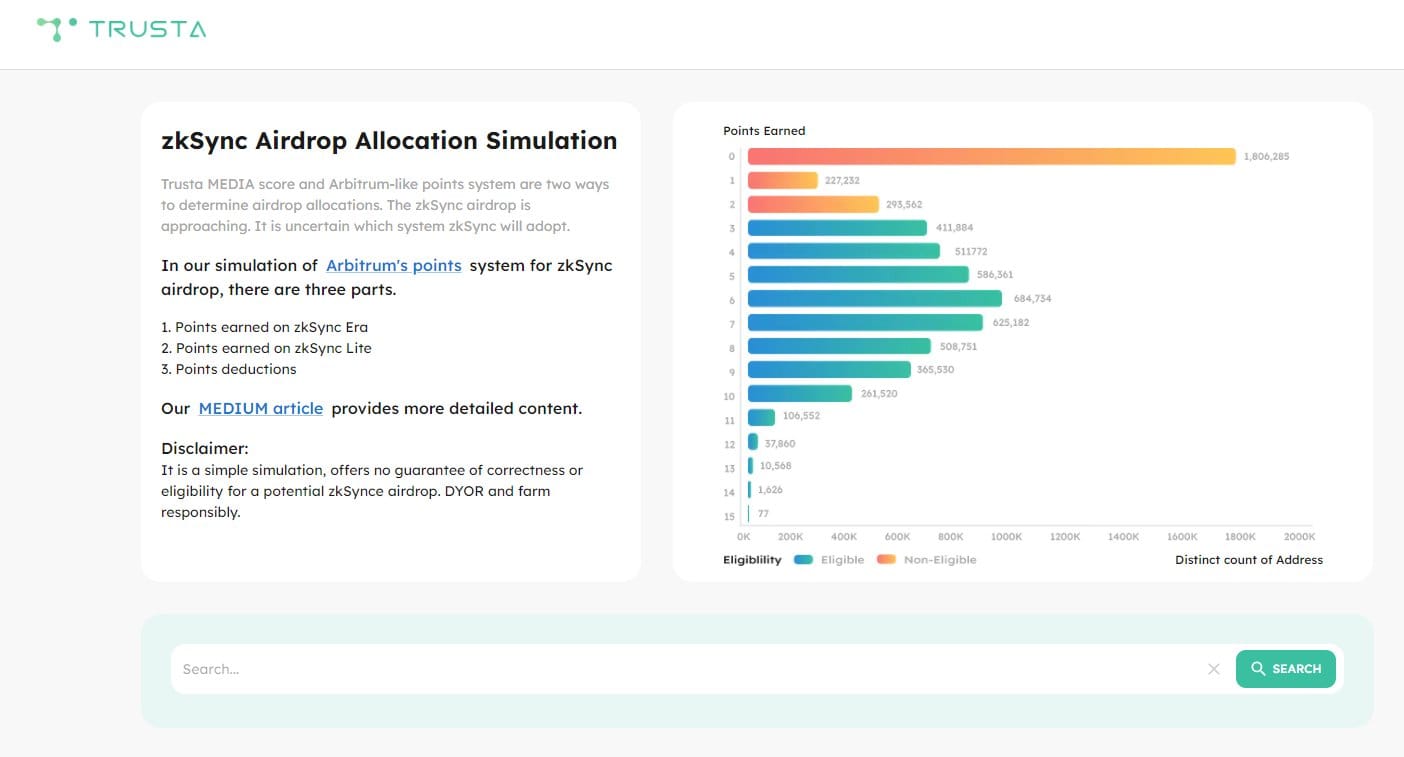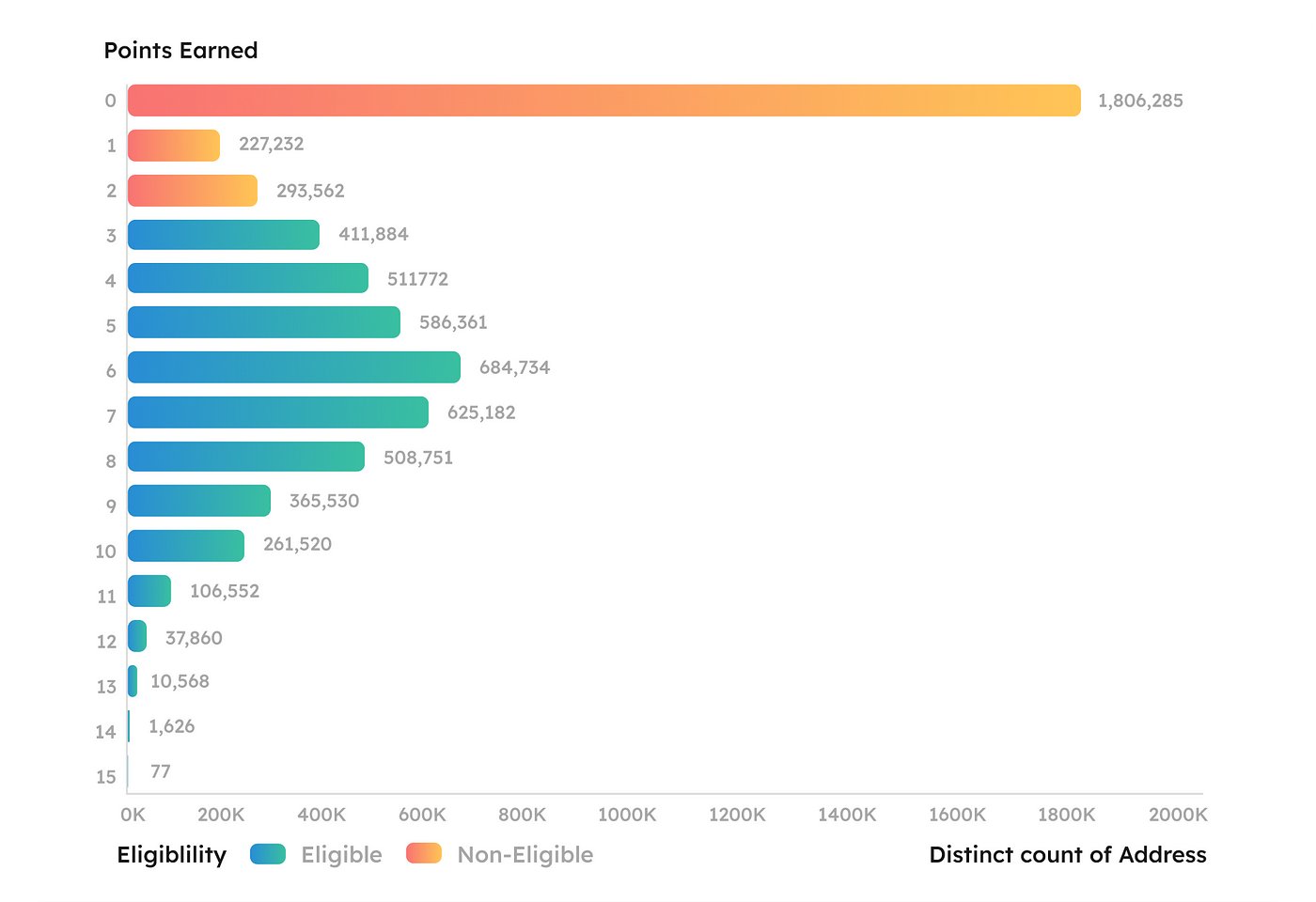zkSync Airdrop Allocation Simulation: TrustGo Meets Arbitrum's Strategy

In the world of blockchain airdrops, the approach to allocating tokens can make a significant difference in community reception and network adoption. Recently, the focus has been on the anticipated zkSync airdrop, which is now under the spotlight due to a comprehensive analysis conducted by TrustGo. This report, which mirrors the strategy employed by Arbitrum, offers intriguing insights into the potential outcomes of zkSync's token distribution plans.
Check your address simulation here:
https://trustgo.trustalabs.ai/simulation
Understanding the Allocation Strategies
TrustGo has developed the MEDIA score, an innovative metric designed to assess wallet addresses for airdrop eligibility. This method contrasts with Arbitrum's points-based system, which awards tokens based on user activities across different platforms within its ecosystem, such as zkSync Era and zkSync Lite.
Given the uncertainty surrounding zkSync's adoption of either the MEDIA score or a similar points system, TrustGo embarked on a simulation using Arbitrum's existing framework to predict how it might apply to zkSync's upcoming airdrop.
Simulation Insights

The simulation provided a detailed breakdown of how zkSync's addresses might be scored based on the same criteria used by Arbitrum. As of April 24, 2024, approximately 6.4 million addresses from zkSync Era were analyzed, resulting in a bell-curve distribution with an average score of six points per address.
In Arbitrum's model, addresses scoring three points and above qualify for airdrops. Applying this threshold to zkSync would make over 4.1 million addresses eligible, which seems overly generous and potentially impractical due to the vast number of recipients.
A more selective approach, setting the bar at nine or ten points, appears to be more feasible for zkSync. This higher threshold significantly reduces the number of eligible addresses to roughly 783,733 for those scoring nine points and 418,203 for addresses with ten points.
Performance Analysis of High-Scoring Addresses

To better understand the impact of these potential thresholds, TrustGo analyzed two specific addresses, one scoring nine points and another with ten. The performance metrics of these addresses were exemplary, demonstrating high levels of engagement and transactions within the zkSync ecosystem.
What This Means for zkSync
This detailed simulation sheds light on the strategic decisions zkSync might face in distributing its tokens. By considering both the MEDIA score and a points-based system similar to Arbitrum's, zkSync can tailor its airdrop to encourage active participation and reward its most committed users effectively.
Key Resources and Further Reading
For those interested in delving deeper into the simulation details or checking how their own addresses might fare under these simulated conditions, TrustGo has provided several resources:
- zkSync Simulation Overview: TrustaLabs Analysis on Medium
- Alternative Simulation Reference: TrustaLabs on Twitter
- Personal Address Simulation Tool: TrustGo Address Simulator
As zkSync approaches its airdrop event, the choices it makes in terms of allocation strategies will be pivotal. The analysis by TrustGo offers a valuable framework for zkSync, potentially guiding it towards a method that balances fairness with strategic incentivization. As always, the final decision will resonate across its user base, influencing both current engagement and future adoption.